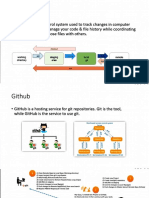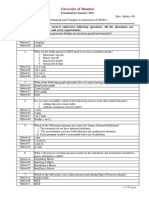0% found this document useful (0 votes)
13 views4 pagesAjay Version Control 1
Git is a free, open-source distributed version control system created by Linus Torvalds in 2005 for efficient code management and collaboration. Version control systems help track changes, manage files over time, and enable collaboration without conflicts. Key features include history tracking, undo capability, branching, and backup, with Git being the most widely used distributed version control system today.
Uploaded by
ajaylap03Copyright
© © All Rights Reserved
We take content rights seriously. If you suspect this is your content, claim it here.
Available Formats
Download as PDF, TXT or read online on Scribd
0% found this document useful (0 votes)
13 views4 pagesAjay Version Control 1
Git is a free, open-source distributed version control system created by Linus Torvalds in 2005 for efficient code management and collaboration. Version control systems help track changes, manage files over time, and enable collaboration without conflicts. Key features include history tracking, undo capability, branching, and backup, with Git being the most widely used distributed version control system today.
Uploaded by
ajaylap03Copyright
© © All Rights Reserved
We take content rights seriously. If you suspect this is your content, claim it here.
Available Formats
Download as PDF, TXT or read online on Scribd
/ 4
























































































